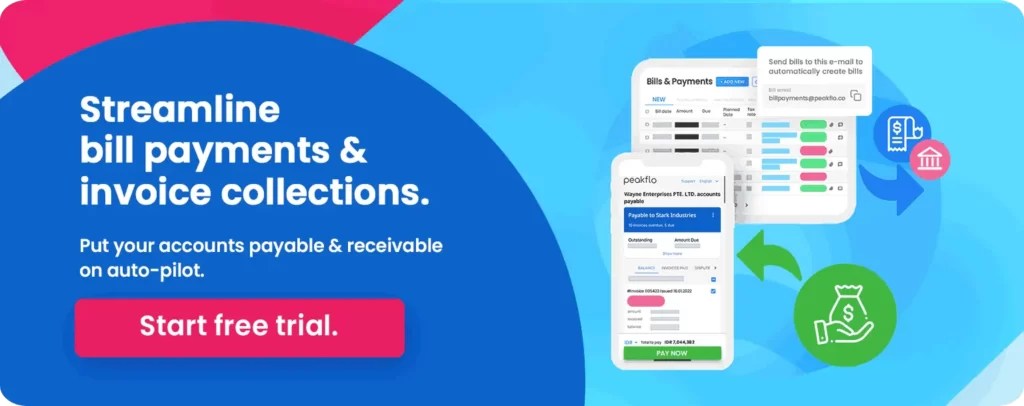According to a report by ACFE, organizations across the world lose 5% of revenue due to fraud or unauthorized spending. As a result, finance teams are increasingly adopting a three-way match technique as an essential step in their accounts payable process.
In this blog, we will understand the process of a 3-way match and uncover its importance in fortifying financial integrity within organizations.
What is a 3-Way Match?
A 3-way match is a critical process in accounts payable and procurement, involving the comparison of three key documents – the purchase order (PO), the goods receipt note (GRN), and the supplier’s invoice. The goal of the 3-way match is to ensure that the details on these documents align and match, confirming that the company received the correct quantity of goods or services at the agreed-upon price.
2-Way vs 3-Way vs 4-Way Match
Two-way matching is the process of matching two documents the invoice and the purchase order.
Introducing an additional layer of scrutiny beyond the 3-way match, a 4-way match involves thorough cross-verification and inspection of all documents post-delivery, ensuring comprehensive validation before ultimately approving the goods or services. It is time-consuming and only done when strict compliance or verification is needed.
Among the options of 2-way and 4-way matching, the 3-way match process stands out as the optimal selection for internal control measures.
Components of a 3-Way Match
Three-way matching is the process aimed at verifying the authenticity of an invoice before releasing payment. It involves scrutinizing key components to ensure accuracy and prevent errors. Here are the components of a three-way match:
Purchase Order:
The purchase order is the initial document created by the buyer, specifying the details of the intended transaction. It includes information such as the quantity, description, and agreed-upon price for the goods or services. This document acts as a foundational agreement between the buyer and the supplier.
Check out our free ready-to-use Purchase Order Template to create an effective PO.
Goods Receipts Note:
The goods receipt note is a record confirming that the receiving officer has accepted the goods delivered by the supplier. It outlines the received quantity, the condition upon delivery, and other details. Once completed by the receiving department, this document is forwarded to the accounts department.
Supplier’s Invoice:
The supplier issues an invoice to the buyer, billing them for the delivered goods or services. The invoice includes details such as the quantity, price per unit, and the total amount due.
Check out our free ready-to-use Invoice Template to create an effective Invoice.
When all three components align, it signifies a successful three-way match, indicating that the transaction is accurate and can be processed for payment. This matching process is crucial for maintaining financial control, preventing overpayments or underpayments, and ensuring transparency.
Step-by-Step Guide to 3-Way Match with Example
Primarily 3-way match is done to ensure:
Quantity Match: Verify that the quantity of goods or services on the supplier’s invoice matches the quantity specified in the purchase order and matches what was received.
Price Match: Confirm that the unit prices on the supplier’s invoice align with the prices specified in the purchase order.
Receipt Match: Ensure that the goods or services listed on the supplier’s invoice match what was received and recorded in the goods/services receipt.
Now, let’s take a look at how the three-way match is performed by the accounts payable team:
- The procurement or accounts payable department initiates an order with the supplier by generating a purchase order.
- Upon receiving the goods or services, the receiving department compares what was received to the details specified in the purchase order and issues a goods receipt note.
- The supplier sends an invoice to the accounts payable team against the PO.
- The accounts payable team checks and matches the invoice with the PO and the GRN.
- If all the details in the three documents match, the invoice is approved, and payment is released.
- If any discrepancies are identified during the three-way matching process, the invoice is temporarily put on hold, and payment is withheld. Then a thorough investigation is conducted to identify and resolve the issues. Afterward, the invoice can be processed for payment.
Here is an example to simplify the details of the process:
A convenience store needs 200 water bottles. A PO is sent to the supplier upon placing the order. The supplier sends an invoice of $500 to the convenience store. The receiving personnel checks the delivery and generates a GRN. The convenience store manager matched the PO, GRN, and Invoice and found all three documents aligned, thus processes the payment.
Why 3-Way Matching Important for Businesses?
Eliminate Fraud
Implementing a 3-way matching system is crucial for businesses to mitigate fraudulent activities. By cross-verifying PO, GRN, and invoice, companies can detect discrepancies or unauthorized transactions, creating a robust defense against fraudulent practices.
Promote Transparency
The 3-way matching process promotes transparency in financial transactions. This transparency builds trust among stakeholders and enhances vendor-supplier relationships. This is utilized for tracking payments and for litigation.
Increase Profits
Accurate 3-way matching prevents overpayments and errors in financial transactions. By ensuring that businesses only pay for what they have received at the agreed-upon prices, the 3-way matching process contributes to cost savings and ultimately increases profits.
Maintain Records
A systematic 3-way matching system aids businesses in maintaining accurate and comprehensive records. By documenting and cross-referencing each step of the procurement process, companies can create a reliable audit trail. This not only supports internal control but also facilitates compliance with regulatory requirements and external audits.
Challenges of the Manual 3-Way Match
The three-way matching process is crucial for maintaining financial accuracy, but performing it manually comes with several challenges:
Time-Consuming
Issue: Manually matching POs, GRNs, and invoices can be a time-consuming process. It requires significant effort to review each document, line by line, to ensure that quantities, prices, and terms match.
Impact: This can lead to delays in processing payments, impacting vendor relationships and potentially causing late payment penalties.
Prone to Errors
Issue: Manual data entry is prone to errors. Even with careful scrutiny, mistakes can occur during the matching process, leading to discrepancies and inaccurate financial records.
Impact: Data entry errors can result in overpayments, underpayments, or disputes with suppliers. Rectifying these errors further adds to the workload and time required for resolution.
Process Complexity
Issue: The criteria for matching can be complex, especially in large organizations with diverse products and services. Matching criteria may vary for different types of goods and services.
Impact: The complexity can result in overlooking discrepancies, leading to payment errors. It also increases the likelihood of discrepancies going unnoticed until reconciliation or audit processes.
Incomplete Documentation
Issue: Sometimes, documentation may be incomplete or missing. For example, a goods receipt might not be recorded, or an invoice may not reference the correct purchase order.
Impact: Incomplete documentation can hinder the 3-way matching process, leading to uncertainties and challenges in validating the accuracy of transactions. It may require additional communication with suppliers to obtain missing information.
Limited Scalability
Issue: As the volume of transactions increases, the manual three-way matching process becomes less scalable. The workload and complexity may overwhelm the manual review capacity of the accounts payable team.
Impact: This limitation can result in backlogs, further delays in payment processing, and increased potential for errors. It may necessitate additional or external resources to perform the task.
Why Should You Automate the 3-Way Matching Process?
In an era of technological advancements, embracing automation in the three-way matching process is not just a strategic choice but a necessity for organizations seeking to stay competitive and resilient in the evolving landscape of financial management. The benefits of implementing an automated solution range from increased efficiency and accuracy to substantial cost savings and improved compliance.
Automation not only expedites payment processing but also enhances visibility, allowing stakeholders to monitor transactions in real-time and address issues quickly. The scalability of automated solutions accommodates growing business needs, while streamlined communication with vendors fosters stronger relationships. Additionally, the integration of these automated processes with ERP and accounting systems ensures data consistency and accuracy across the organization.
By automating three-way matching you can:
- Easily check your GRN matching status
2. Seamlessly match bills with PO
3. Automatically flag mismatches
4. Sync the data to ERP and Accounting Software
Unleash the power of automation with Peakflo’s Automated Reconciliation and 3-Way Matching











![Why AI Sales Calls Are Making Good Sales Reps Even Better [2025 Guide] ai sales calls](https://blog.peakflo.co/wp-content/uploads/2025/09/65168cf6-3001-4733-8cbc-12d5684cf449-218x150.webp)




































